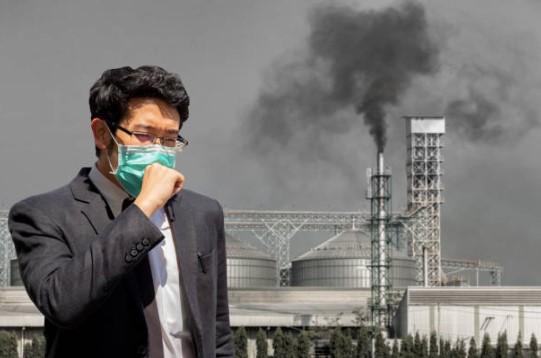COVID-19 will not put climate change risks into lockdown but there are similarities between managing the pandemic and managing climate risk that we can learn from.
We have seen from the response to the COVID-19 pandemic that the countries that acted based on scientific and medical evidence and modelling, and acted quickly appear to have managed the threat to the health of their populations and health systems. They are looking as if they will restore business and economic activity quicker than those that didn’t.
We knew this pandemic was coming and it won’t be the last
Pandemics have been occurring for millennia and in the last 100 years we have seen the emergence of Spanish Flu (1918-1919), Asian flu (1957-1958), Hong Kong Flu (1968-1970), HIV/AIDS (1981-to present), SARS (2002-2003), Swine Flu-H1N1 (2009-2010), MERS (2015- present), Ebola 2014-2016 and COVID-19 (2019-present).
The Intergovernmental Science-Policy Platform on Biodiversity and Ecosystem Services warn that worse pandemics will come if we do not act to protect the environment. The number and diversity of infectious disease outbreaks are gradually but inexorably increasing. According to the World Health Organization (WHO), 7,000 new potential outbreaks occur each month, generating 300 follow-ups, 30 investigations and 10 risk assessments.
The spread of diseases to and by humans is increasing with the urbanisation of developing countries, with human activity putting pressure on the environment. Through rampant deforestation, expansion of agriculture into native forests, wildlife trade, mining, infrastructure development, and with climate change comes evolution in transmission patterns of infectious diseases. This is exacerbated by our digital hyper-connectivity and increased travel.
What risk lessons can we learn from COVID-19
The COVID-19 pandemic has provided a number of valuable lessons to business, many of which will help them to be stronger and more resilient.
Some of the lessons are:
- Be prepared for the unlikely, but catastrophic events.
- Know your vulnerabilities and exposure to the extremes of the hazard.
- Be agile and adaptable.
- Be prepared to innovative.
- Know and understand your supply chain and alternatives.
- Know your customers.
- Have clear and consistent messaging and frequent communication with stakeholders.
- Prepare for inconsistency of supply and demand.
- Try to understand the big picture, the risks, and how circumstances change as you gain more knowledge.
- Trust and use the science-based evidence and models.
Applying these lessons to Climate Change Risk
Climate change is also causing foreseeable financial and environmental risks. This fact that is not overseen by many organisations, regulators and central banks. The World Economic Forum Global Risks Report 2020 has listed climate action failure as the number one risk in terms of impact. The impact of infectious diseases is in tenth position, behind climate action failure, weapons of mass destruction, biodiversity loss, extreme weather, water crises, IT infrastructure breakdown, natural disasters, cyberattacks and human environmental disasters. The five environmental risks in this list also make up top five risks in terms of likelihood.
Climate change risks are physical in nature, brought about by extreme “natural” events as well as transitions resulting from the world adopting a low carbon economy.
Like the COVID-19 pandemic, climate change risks can be local and systemic. Globalised supply chains mean that disruptions far from a manufacturing plant or retailer can lead to critical delays and disruptions for organisations. These risks are compounded by growing complexity in supply chains, with visibility often limited to first-tier suppliers in a network.
Some of the systemic risk events that may result from climate change are:
- Conflict over water security resulting from long term droughts.
- Disruption in food supply caused by droughts, floods, fires, severe storms occurring simultaneously throughout different food production areas.
- Large scale migration triggered by environmental events such as drought, sea level rise.
- Pandemics effecting production and transport of a range of goods.
The lessons that the pandemic is teaching us about agility, innovation, understanding supply chains, identifying threats and vulnerabilities, planning and applying the science, should be applied to acting on climate change risks.
5 things to start to do now
So, what can you do right now?
- Develop a climate change risk action plan.
- Use any COVID-19 economic recovery measures to help your organisation to be more resilient to climate change risks.
- Conduct a high level scoping exercise to identify the types of climate threats that your organisation may be exposed to.
- Understand your organisation’s possible vulnerabilities to climate change threats using different possible scenarios.
- Comply with any reporting requirements that your organisation and/or the directors have for climate change risks.
How we can help
We are here to help in a number of ways as your organisation starts, or continues, its climate change risk journey. This can include:
- Climate-risk awareness and TCFD compliance training.
- Facilitating workshops and financial climate change impact assessments to identify and understand the threats that climate change pose to your organisation.
- Perform scenario analyses of the threats identified looking at different possible scenarios over the short, medium and long term over a particular asset, activity or area.
- Provide a roadmap to enhance the organisation’s climate change risk management strategy.
- Conduct reviews to ensure regulatory disclosures are robust and relevant.
How far do you want to go to minimise the impact of climate change on your business? Be more resilient and contact us to discuss your needs.
